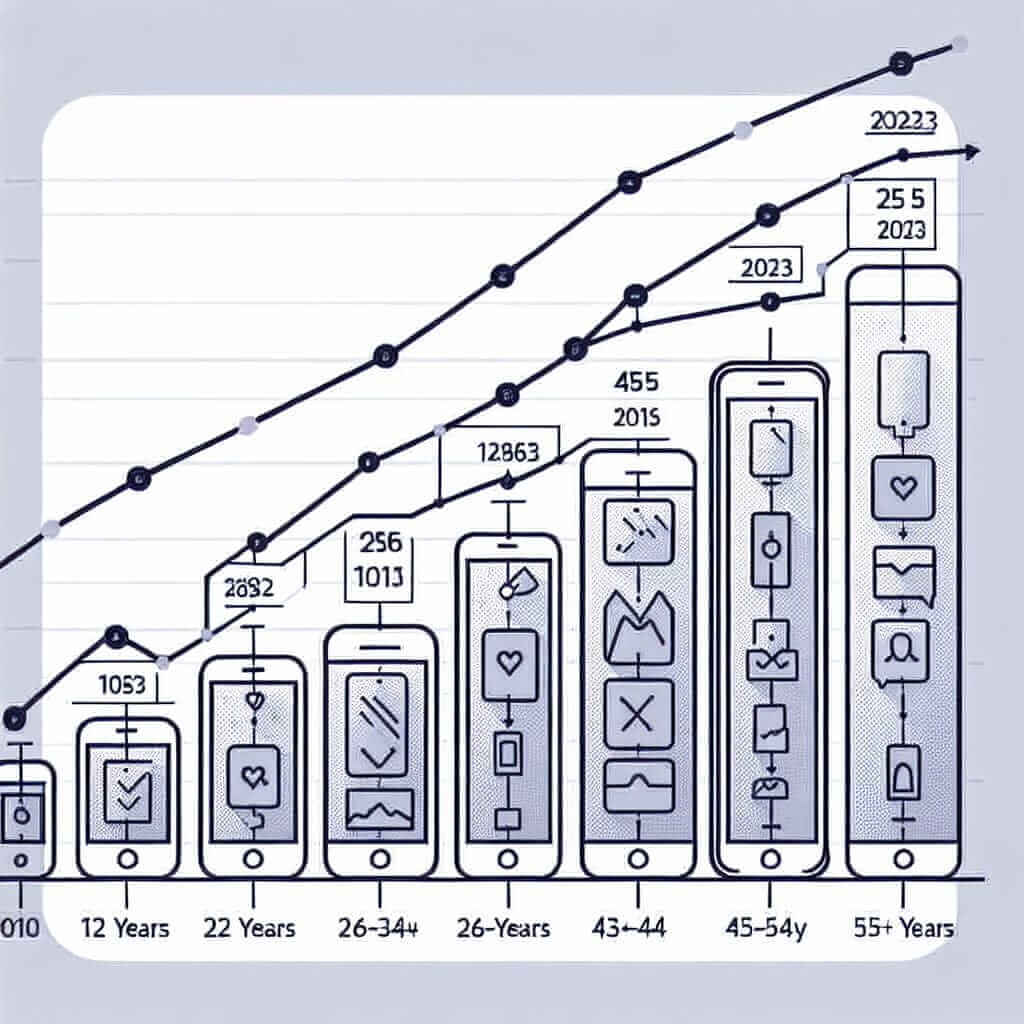The IELTS Writing Task 1 often presents data in various formats, requiring test-takers to analyze and describe the information clearly and accurately. One common theme is analyzing trends related to technology, and “smartphone usage by age group” is a topic that frequently appears. This article will guide you on how to effectively tackle such tasks, aiming for a Band 7+ score.
Sample IELTS Writing Task 1 Question:
You should spend about 20 minutes on this task.
The chart below shows the percentage of different age groups who used a smartphone from 2010 to 2023.
Summarize the information by selecting and reporting the main features, and make comparisons where relevant.
(Insert a table or chart here depicting smartphone usage by age group from 2010 to 2023).

Analyzing the Task:
This task requires you to:
- Identify the type of data: This is usually a line graph, bar chart, or table showing percentages over time.
- Highlight key trends: Focus on the most significant changes, increases, decreases, and any notable differences between age groups.
- Compare and contrast: Analyze how smartphone usage varies across different age groups.
- Summarize concisely: Present the information in a well-structured and easy-to-understand manner.
Model Answer:
The line graph illustrates the proportion of individuals using smartphones across various age demographics from 2010 to 2023.
Overall, smartphone usage has witnessed a substantial surge across all age groups during this period. However, the most dramatic growth is observed among younger generations.
In 2010, smartphone penetration was highest among the 18-25 age group, at approximately 40%, while only 10% of individuals aged 55 and above used smartphones. This younger age group experienced a rapid increase, reaching nearly 90% by 2023.
Similarly, the 26-34 and 35-44 age groups demonstrated a considerable uptake in smartphone usage, rising from around 25% and 15% in 2010 to 85% and 75% respectively by 2023. Interestingly, the growth rate for these groups was steeper between 2010 and 2018, after which it plateaued.
While the oldest age group (55+) started with the lowest usage, their adoption rate saw a steady climb, reaching about 45% in 2023. This indicates that although seniors are increasingly embracing smartphones, a significant digital divide still exists.
(Word count: 190 words)
Key Points for Writing About Smartphone Usage:
- Vocabulary: Use precise vocabulary to describe trends (e.g., surge, increase steadily, plateau, significant growth, digital divide).
- Grammar: Employ a variety of grammatical structures, including comparatives, superlatives, and complex sentences to convey information effectively.
- Structure: Organize your response logically, using paragraphs to separate main points. Start with an overview, then delve into specific details.
- Conciseness: Be clear and concise in your writing, avoiding unnecessary repetition or irrelevant information.
Difficult Vocabulary:
- Penetration (noun) /ˌpen.əˈtreɪ.ʃən/: the extent to which something becomes common
- Demographics (noun) /ˌdem.əˈɡræf.ɪks/: statistical data relating to the population
- Substantial (adjective) /səbˈstæn.ʃəl/: large in amount or degree
- Uptake (noun) /ˈʌp.teɪk/: the rate at which something is taken into a system or organization
- Plateau (verb) /plætˈoʊ/: to reach a state of little or no change after a period of activity or progress
Conclusion:
Mastering the art of describing data related to “smartphone usage by age group” is crucial for achieving a high band score in IELTS Writing Task 1. By understanding the key trends, utilizing appropriate vocabulary and grammar, and structuring your response effectively, you can confidently approach this type of question and achieve your desired results.